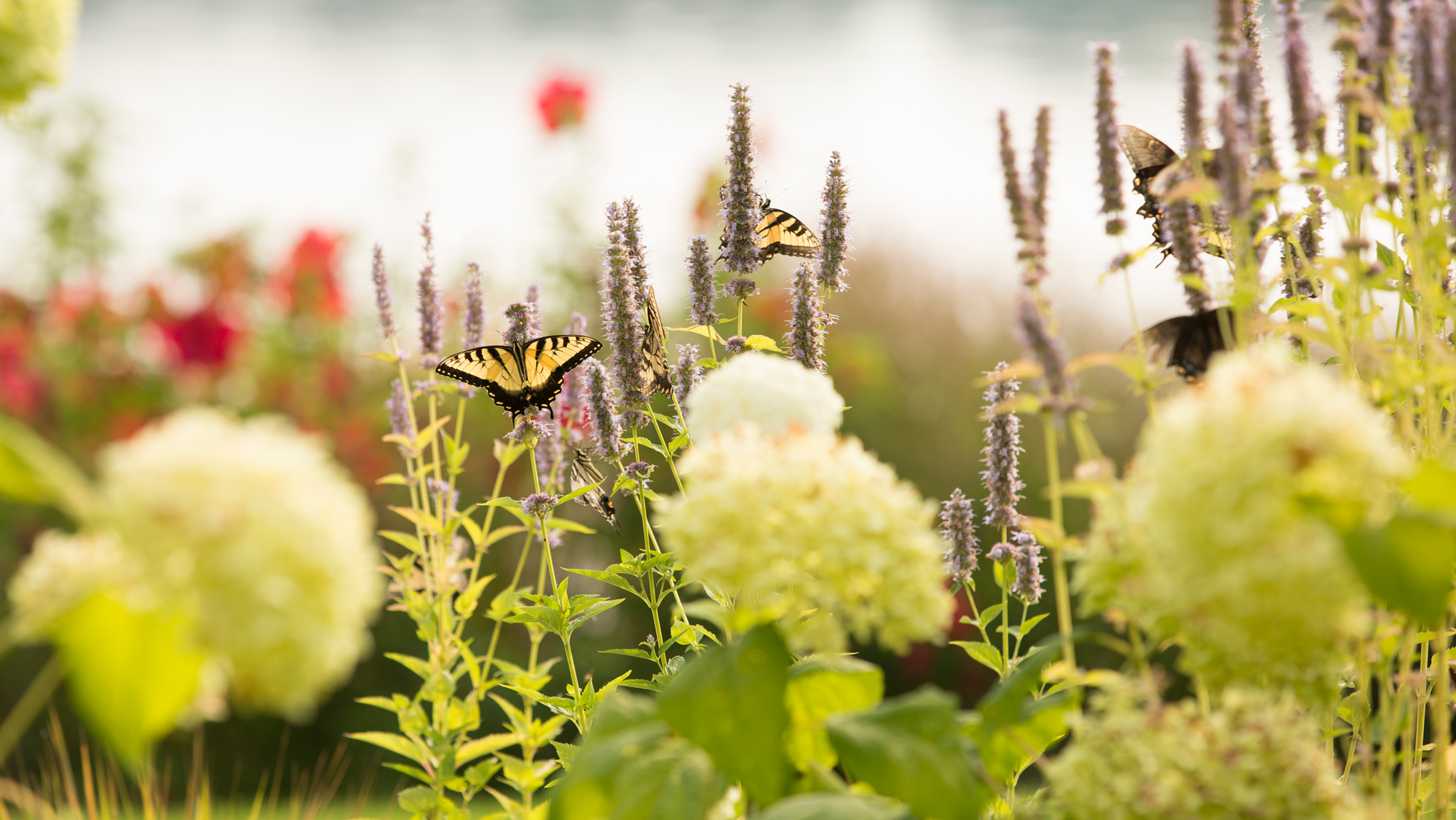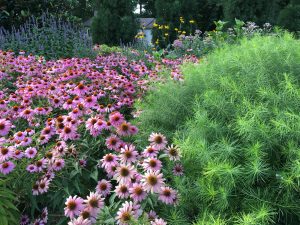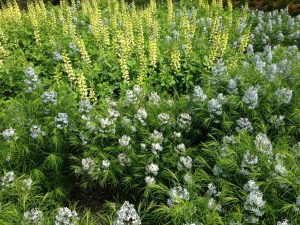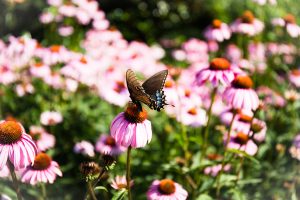- © 2024 Annapolis Home Magazine
- All Rights Reserved
By Robert C. Hruby, ASLA
Photography Courtesy of Campion Hruby Landscape Architects
and David Burroughs

Hydrangea arborescens ‘Annabelle’ is a great selection of this species, which is native to the East Coast. Tiger Swallowtail Butterflies are loving the Agastache ‘Blue Fortune’.
In my last article, we discussed ways to pause and admire the nature that surrounds our homes. I have to admit that it really didn’t happen for me until very recently, after the rains and clouds gave way to a normal summer day on the Chesapeake Bay. With heat, humidity, reflecting sun, and the sounds of cicadas buzzing. I hit pause on life, grabbed my camera, and sped to my favorite garden, which overlooks the Severn River.
This is the height of the season, when all the summer perennials have reached above the spring flowers we saw emerging in April and May. They are mostly in full bloom, but some are already gone. I missed them again! (Fortunately, I have some photos from past seasons.) The warm season grasses, which were hardly present earlier, have finally filled in and are beginning to bloom. The garden is now swarming with pollinating insects and chasing birds.
With all this happening, I am drawn to the overall textures of the composition and the various colorful blooms that pop up here and there. The contrasting textures of a landscape are really what defines a successful planting design. We all love the flowers, but these don’t persist, so you need to think about the overall qualities of each plant throughout the seasons. When the composition is considered as a whole, the qualities of each plant will help decide where who is placed next to who. Our designs for herbaceous borders are typically fairly loose, and inspired by natural landscapes. One of my mentors described this as a battle of plants “fighting it out” for space in the garden. This evolution of a constantly changing garden is what makes it so wonderful, if you pay attention to what is happening. In studying a meadow, you can see that there is usually a dominant matrix of a medium sized plant throughout—often a fine-textured grass. Taller species evolve to reach above this layer to seek the sun. Below, in the shade, a layer of creeping plants occupies the in between spaces and spreads to define the edges. Many of these shorter plants are the ones that we saw blooming in the spring, when they had full attention from the sun. Now they are receding. These ephemeral patterns, which are defined by plants seeking the moisture, soil, and light levels they prefer, are legible in nature and make great inspirations for our own garden designs.
Everything is about to change again, as we hit the “dog days” of August. Get out there with all the birds, bees and butterflies, before it is too late.
Watch Where the Water Flows
As the heat comes on strong, we often crank up our irrigation systems. Your lawn is the biggest water hog in the garden, if you want it to stay green all summer. Be careful not to overwater the plants adjacent to your lawn. Many of our native plants actually prefer dry to medium soil moisture and well drained soils. If your plant’s leaves are turning yellow, you may be overwatering them.
Learn What Conditions Your Plants Prefer
Different plants have different needs. For example, hydrangeas like water and Nepetas (catmints) prefer drier conditions. To make watering more efficient, pair plants that prefer the same conditions.

This combination of colors and textures has persisted in this garden for may seasons. The front of the border consists of Echinacea purpurea ‘Magnus’ and Amsonia hubrichtii. Agastache ‘Black adder’, Rudbeckia maxima and Eupatorium fistulosum are rising up from behind.

I am including this photo showing the same patch of Amsonia, (as pictured above) earlier in the summer. The light blue flowers of the Amsonia are blooming with creamy yellow Baptisia ‘Carolina Moonlight’. This show is short lived, as the Baptisia finish quickly and disappear behind the taller growing plants.

Allium Giganteum is an ornamental onion that grows to 40″ tall, in late Spring. Use this in groups, and repeat throughout the sunny parts of your garden. These add a colorful accent in the early season.

Echinacea purpurea ‘Magnus’ is a reliable and easy to grow plant, and is known to attract butterflies. We leave these up all year, even after the flowers are done. The seed heads provide a food source for insects and birds throughout the season.
Bob Hruby spent most of his life playing and working on and around the Chesapeake Bay, and lives with his wife and three kids in Annapolis. His passion for design, building and the environment led him to earn degrees in Architecture and Landscape Architecture. He and his business partner Kevin Campion lead a firm of award-winning landscape architects in Annapolis.
RESOURCE:
LANDSCAPE ARCHITECT: Campion Hruby Landscape Architects, campionhruby.com, Annapolis, Maryland
Annapolis Home Magazine
Vol. 9, No. 4 2018